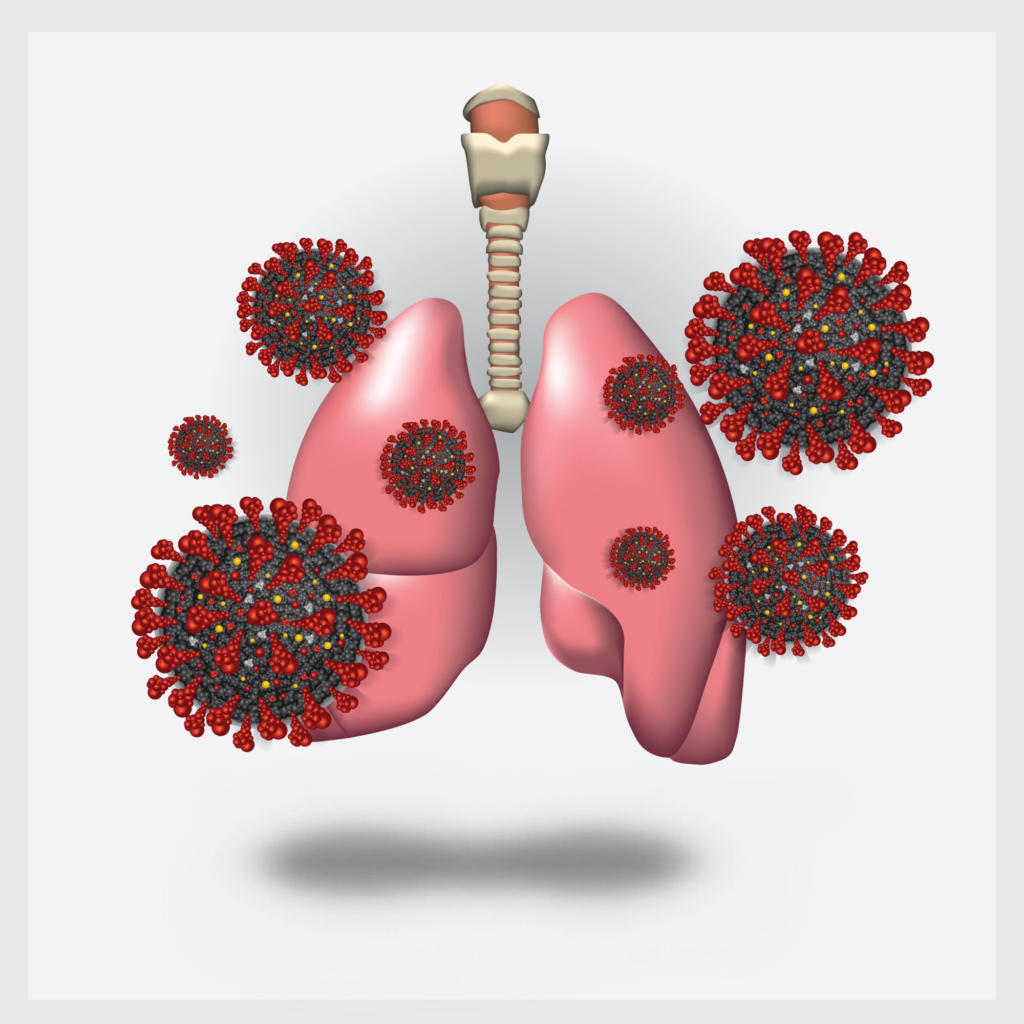Great Health Great Fitness
2025’s Alarming Virus Surge: What You Need to Know About HMPV and Its Global Impact

The year 2025 began with alarming news of a new virus outbreak that has shaken the global health community. Human metapneumovirus (HMPV), which has been around since its discovery in 2001, has recently caused a significant surge in respiratory infections, particularly in China. This surge is more concerning compared to previous years due to increased transmission rates and the potential for new viral mutations, raising alarms about a potential pandemic. This development has drawn the attention of healthcare professionals, governments, and global organizations, raising questions about the virus, its impact, and the necessary precautions to prevent further spread.
In this article, we explore the history, biology, and epidemiology of HMPV, along with an analysis of the ongoing outbreak, its implications, and measures being undertaken worldwide. Understanding these aspects is crucial for staying informed and prepared.
What Is Human Metapneumovirus (HMPV)?

Human metapneumovirus (HMPV) is a respiratory virus belonging to the Paramyxoviridae family, which includes other significant pathogens like respiratory syncytial virus (RSV) and parainfluenza. First identified in the Netherlands in 2001, retrospective studies reveal that HMPV has been circulating among humans for several decades. It predominantly targets the respiratory tract, where it can cause a spectrum of illnesses. These range from mild, cold-like symptoms—such as a runny nose and sore throat—to severe conditions, including bronchitis and pneumonia. The severity of the infection often depends on the individual’s age, immune status, and any underlying health conditions. HMPV is recognized for its high transmissibility, particularly in crowded or enclosed environments, and its ability to disproportionately affect vulnerable populations, making it a recurring public health challenge.
How HMPV Spreads
HMPV spreads in ways similar to other respiratory viruses, primarily through:
- Respiratory droplets: Expelled when an infected person coughs, sneezes, or talks.
- Direct contact: With an infected individual or contaminated surfaces.
- Fomites: Objects like doorknobs, mobile phones, or toys that carry infectious droplets.
The virus is highly transmissible in crowded or enclosed spaces, where individuals are in close proximity for extended periods, creating ideal conditions for its rapid spread. Such environments include schools, hospitals, and nursing homes, where the combination of high human density and limited ventilation exacerbates the risk of transmission. In schools, for instance, the frequent interaction among students and shared surfaces like desks and equipment provide ample opportunities for the virus to thrive. Hospitals, while places of healing, often house vulnerable patients with weakened immune systems, making them susceptible to severe infections. Similarly, nursing homes are particularly high-risk due to the presence of elderly residents who often have pre-existing health conditions. These settings underscore the importance of implementing robust infection control measures, such as regular disinfection, adequate ventilation, and the use of personal protective equipment, to prevent outbreaks and safeguard public health.
Who Is Most at Risk?
While HMPV can infect people of all ages, certain groups are particularly vulnerable to severe outcomes. This vulnerability is rooted in physiological, immunological, and environmental factors that compound the severity of infections. These high-risk groups include infants and young children, elderly individuals, people with chronic respiratory conditions, and immunocompromised individuals. Understanding why these groups are disproportionately affected can help shape targeted preventive measures and medical responses.

- Infants and young children: Their immune systems are still developing.
- Elderly individuals: Weakened immune systems due to age.
- People with chronic respiratory conditions: Such as asthma or chronic obstructive pulmonary disease (COPD).
- Immunocompromised individuals: Including cancer patients undergoing chemotherapy or those with HIV/AIDS.
The HMPV Outbreak in China
Timeline of the Outbreak

In December 2024, hospitals across China began reporting an alarming surge in respiratory illnesses, initially attributing it to familiar culprits such as influenza and COVID-19. However, subsequent in-depth investigations, supported by advanced diagnostic testing, unveiled human metapneumovirus (HMPV) as the unexpected primary cause. The virus accounted for a significant proportion of cases, overshadowing other pathogens in prevalence. By January 2025, the Chinese Center for Disease Control and Prevention (CDC) officially confirmed HMPV as the dominant driver of this unprecedented wave of respiratory infections, marking a critical moment in the global understanding of viral epidemiology.
Key Statistics
During the peak of the outbreak:
- 6.2% of positive respiratory illness tests were attributed to HMPV.
- 5.4% of hospitalizations for respiratory symptoms were linked to the virus.
These figures marked a significant increase compared to previous years, likely driven by changes in public behavior, environmental factors, and possible viral evolution, surpassing infections caused by COVID-19, rhinoviruses, and adenoviruses.
Geographic Spread
The outbreak initially concentrated in major cities like Beijing, Shanghai, and Guangzhou, where high population density and frequent travel facilitated rapid transmission. Holiday gatherings and increased domestic travel further spread the virus to rural areas. By early January 2025, neighboring countries, including Japan, South Korea, and India, reported isolated cases linked to travelers from China.
Clinical Manifestations of HMPV
Symptoms in Mild Cases
For most individuals, HMPV infection presents with mild, flu-like symptoms:
- Runny or stuffy nose
- Sore throat
- Cough
- Mild fever
- Fatigue and body aches
These symptoms typically resolve within a week without requiring medical intervention.

Severe Symptoms in High-Risk Groups
In vulnerable populations, HMPV can lead to more severe respiratory conditions, such as:
- Bronchitis: Inflammation of the bronchial tubes, leading to persistent cough and difficulty breathing.
- Pneumonia: Infection of the lungs, causing high fever, chest pain, and shortness of breath.
- Secondary bacterial infections: Which may require antibiotic treatment.
Severe cases may necessitate hospitalization, particularly for infants and elderly individuals.
How HMPV Compares to Other Respiratory Viruses
HMPV shares many symptoms with other respiratory viruses like influenza, RSV, and COVID-19, making it difficult to diagnose based on symptoms alone. Advanced diagnostic tools, such as polymerase chain reaction (PCR) tests and viral cultures, are required to confirm HMPV infections.
Why Is This Outbreak a Cause for Concern?

High Transmission Rates
HMPV’s ability to spread quickly in crowded environments has made it a significant public health concern. Its resemblance to common colds or the flu often leads to delayed diagnosis, allowing the virus to spread undetected.
Lack of a Vaccine or Targeted Treatment
Unlike influenza or RSV, for which vaccines and antiviral medications are available, there is no specific vaccine or treatment for HMPV. However, ongoing research and development efforts are focused on creating effective vaccines and therapies, providing hope for future preventative and treatment options. Current management relies on supportive care, such as hydration, rest, and medications to alleviate symptoms. This lack of preparedness makes the virus particularly challenging to combat.
Potential for Mutation
RNA viruses like HMPV have a high mutation rate, which raises concerns about the emergence of more virulent or transmissible strains. While the current outbreak appears to involve known strains, future mutations could increase the virus’s severity or resistance to immune defenses.
Global Implications

Overburdened Healthcare Systems
Hospitals in affected areas have reported shortages of:
- Intensive care unit (ICU) beds
- Ventilators
- Medical staff
To address these shortages, healthcare systems are implementing measures such as reallocating resources, recruiting additional staff, and setting up temporary facilities to expand capacity. Efforts are also underway to optimize patient care by prioritizing critical cases and utilizing telemedicine for non-urgent consultations.
Economic Consequences
The outbreak has disrupted industries such as tourism, manufacturing, and retail. Border closures and travel restrictions have compounded these challenges.
Psychosocial Effects
The uncertainty surrounding the virus has led to increased anxiety and stress among the public, reminiscent of the early days of the COVID-19 pandemic.
Public Health Responses
Measures in China

The Chinese government has implemented several measures to contain the outbreak, including:
- Enhanced surveillance: Increased testing for respiratory illnesses to identify and isolate HMPV cases.
- Public awareness campaigns: Disseminating information about the virus and preventive measures through media and social platforms.
- Travel restrictions: Limiting movement in and out of affected regions to prevent further spread.
International Actions
Globally, countries are adopting precautionary measures, such as:
- Screening travelers: Implementing temperature checks and health screenings at airports.
- Strengthening healthcare systems: Preparing hospitals and clinics to handle a potential surge in respiratory illnesses.
- Collaborative research: Working with organizations like the World Health Organization (WHO) to study the virus and develop vaccines.
Role of the WHO
The WHO has classified the HMPV outbreak as a “public health emergency of international concern” (PHEIC), triggering a coordinated global response. Under this classification, the organization is mobilizing resources to support affected countries, fostering international collaboration to monitor and study the virus, and providing technical assistance to enhance outbreak management and containment efforts. It is coordinating efforts to:
- Monitor the spread of the virus.
- Share data and research findings.
- Support affected countries in managing the outbreak.
Lessons From Past Outbreaks
COVID-19 Pandemic
Highlighted the importance of rapid testing, contact tracing, and global cooperation.
SARS Epidemic (2003)
Demonstrated the need for early intervention and transparent communication.
Influenza Outbreaks
Emphasized the value of vaccination campaigns in reducing disease burden.
These experiences underscore the need for robust healthcare systems, proactive surveillance, and public education to mitigate the impact of outbreaks.
How Individuals Can Protect Themselves

Practice Good Hygiene
- Wash your hands frequently with soap and water for at least 20 seconds.
- Use alcohol-based hand sanitizers when soap is unavailable.
- Avoid touching your face, especially your eyes, nose, and mouth.
Wear Masks
- Use masks in crowded or poorly ventilated areas.
- Ensure the mask covers your nose and mouth securely.
Maintain Social Distancing
- Stay at least six feet away from individuals showing symptoms of illness.
- Avoid large gatherings when possible.
Boost Your Immune System
- Eat a balanced diet rich in fruits, vegetables, and lean proteins.
- Exercise regularly to maintain overall health.
- Get adequate sleep and manage stress effectively.
Seek Medical Attention Early
If you experience severe symptoms, such as difficulty breathing or high fever, consult a healthcare provider immediately.
Conclusion
The HMPV outbreak of 2025 serves as a reminder of the ever-present threat posed by infectious diseases. While the virus itself is not new, the scale and severity of the current outbreak highlight gaps in global preparedness. Addressing these challenges requires a multifaceted approach, including robust public health measures, international collaboration, and individual vigilance.
By staying informed and adopting preventive practices, we can collectively minimize the impact of this outbreak and ensure a safer future for all. As the situation evolves, ongoing research and innovation will play a crucial role in combating HMPV and similar threats. Stay safe, stay vigilant, and prioritize health above all.
Stay Informed, Stay Safe!

The outbreak of Human Metapneumovirus (HMPV) is a reminder of the importance of public health vigilance. For more updates and tips on how to protect yourself and your loved ones, subscribe to our newsletter and follow us on social media. Let’s work together to fight the spread of HMPV and stay safe during these challenging times!
